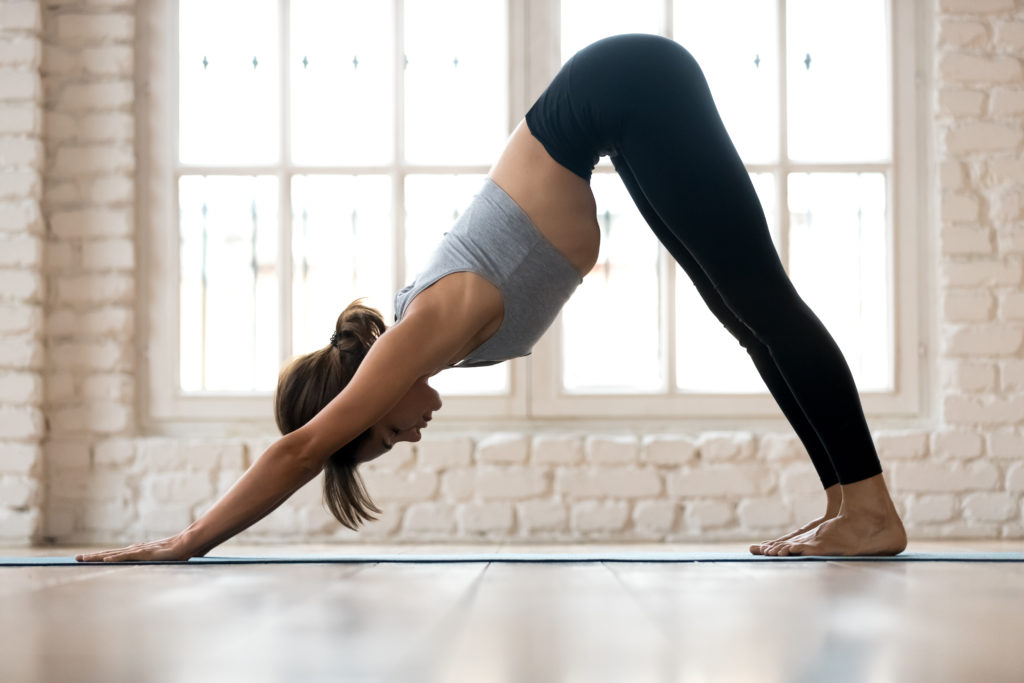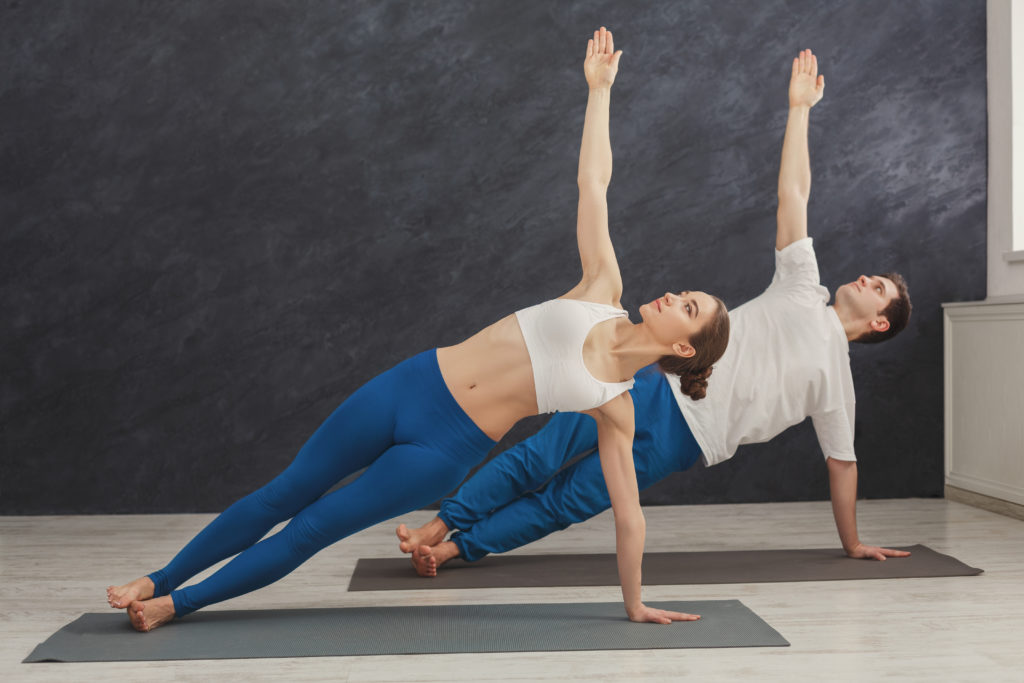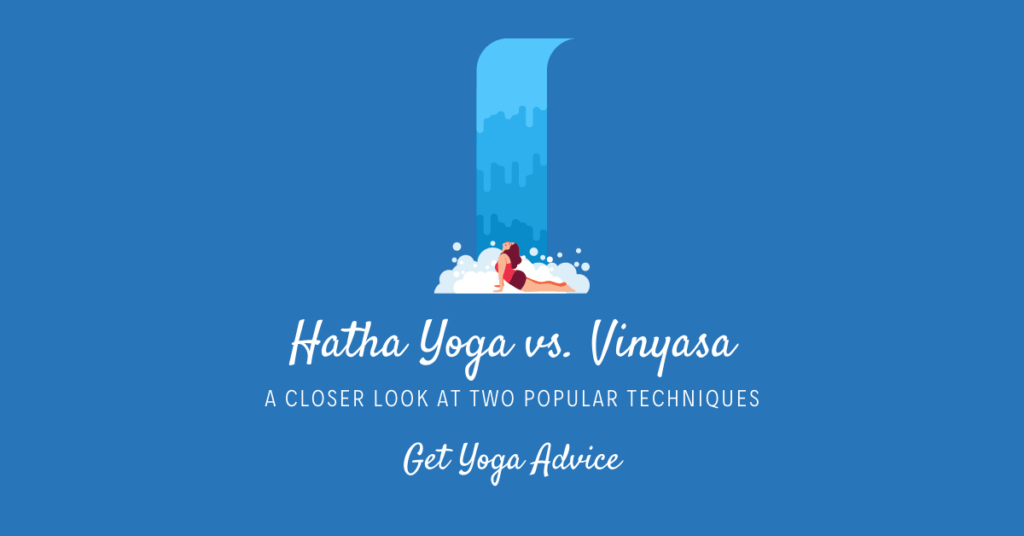Yoga is a form of exercise and meditation traced back 5,000 years. The framework of all forms of modern yoga is in the Patanjali, a yogic philosophy written by an Indian sage, which focuses on pranayama, the practice of breathing.
The western world has embraced the practice of yoga and its different styles. Among the various forms of yoga guided by the Patanjali are Hatha and Vinyasa.
This article will discuss Hatha Yoga vs. Vinyasa and how these types differ from each other.
Contents
Hatha vs. Vinyasa: Do You Know The Difference?
One of the unique aspects of yoga is that there are various techniques and practices. While many people clump Hatha and Vinyasa together, the two are different in a few ways.
An Overview of Hatha Yoga

Hatha yoga is a gentle introduction to the practice of yoga. It is a broad term used to label many common forms of yoga practices.
One example is Iyengar yoga. Iyengar is a form of Hatha developed by BKS Iyengar and focuses on the body’s physical postures during poses. Others may refer to hatha as a restorative yoga such as Kundalini or Yin Yoga.
A Hatha yoga class involves slow and deliberate asanas or postures of the body along with breathing exercises. It challenges a person’s stamina and strength with a focus on mindfulness and relaxation.
Yoga poses most often associated with hatha are the downward-facing dog, cobra pose, and extended triangle pose. These poses and the many others of hatha help keep your core strong, spinal cord properly aligned, and your body movements fluid.
An Overview of Vinyasa

Vinyasa involves poses that go directly from one to the other. We sometimes refer to it as flow yoga or power yoga. Another type of Vinyasa is Bikram Yoga. Bikram Choudhury founded Bikram Yoga, and we commonly call it hot yoga today.
When referencing Vinyasa, you may find the term ashtanga. We use Vinyasa and ashtanga yoga interchangeably. Indian yoga teacher and Sanskrit scholar Pattabhi Jois developed ashtanga.
We use the term sun salutation in Vinyasa, and it is the sequence of 12 asanas completed in a graceful flow. Yoga instructors, known as yogis, will vary in how they weave the sequence’s vinyasa yoga poses. They will often rearrange the sequence of poses to keep classes fresh and fun.
The hallmark of a vinyasa flow is how yoga postures coordinate with breathing techniques. For example, in the cat-cow stretch, they arch the spine on an inhale and round it on an exhale.
You might also be interested in our reiki vs. yoga guide.
Exploring the Benefits of Both

Any yoga practice is loaded with benefits, but when you’re trying to decide between Hatha or Vinyasa, you might want to consider the specific benefits.
1. Managing Stress, Anxiety, and PTSD:
A study published in the scholarly publication, Alternative Therapies in Health and Medicine, concluded that the practice of Hatha yoga has a positive effect on stress and mental restraint.
Some studies have shown that veterans who practiced yoga had a decrease in the effects of PTSD.
This benefit of Vinyasa Yoga also trickles into the lives of men and women across the globe.
The practice of Vinyasa Yoga focuses on your breath. Vinyasa yoga allows you to experience a sense of confidence and boosts your mood.
2. Increases Production of Body Chemicals and Hormones:
People who suffer from depression have lower serotonin levels, a chemical produced by the nerve cells in the body. Yoga is a natural way to increase your serotonin levels.
Hatha also amps up melatonin production. Melatonin is essential to a good night’s sleep.
3. Develop and Maintain Balance:
In general, yoga will help improve your balance. Vinyasa is proven to help people with low vision have better balance and mobility in their everyday lives.
When we have better balance and mobility, we increase our confidence. Ultimately, we become more confident in each step we take.
4. Joint and Muscle Flexibility/Strength:
Continued practice of Hatha Yoga loosens the muscles and tendons surrounding the body’s bones and joints. The practice of hatha breaks down adhesions in the connective tissue that could hinder your joint health.
You will find in the practice of vinyasa that you will transition from poses in a fluid motion, but you will hold your poses longer. When your holding poses for 30-120 seconds, your muscles must work harder to maintain the pose.
5. Increased Core Strength:
The poses involved in Hatha help develop correct posture by increasing your core strength through slow, deliberate movements.
6. Heart Healthy:
Because Vinyasa is a quick succession of yoga poses, there is a cardio aspect. The quick succession of poses will increase muscle strength and therefore build endurance.
Even if you don’t move as quickly in Hatha yoga, getting exercise can benefit your heart. Remember, reducing stress is also good for your heart.
Is One Better Than the Other?
Let’s start by saying that you don’t have to choose one and not the other. What is essential to consider is what goals you are striving to meet. If you are new to yoga and want to increase your strength, then Hatha is an excellent choice.
Vinyasa is a more challenging yoga practice. Yoga poses flow from one to the other at a quicker pace, so having a prior knowledge of yoga is beneficial. If you want a challenge and desire more cardio, then Vinyasa is a great choice.
The Final Word on Hatha Yoga vs. Vinyasa
Hatha and Vinyasa Yoga practices share many similarities. They each focus on the goals of better breathing, reducing stress, and building strength. Their difference lies in the pace. Hatha is a slower-paced yoga practice, whereas Vinyasa provides a cardio component to its practice.
The best way to know which one is right for you is to try them both. Take a yoga class at your local yoga studio or with a personal yoga instructor. You can always try something else if one is not the right fit.



